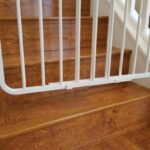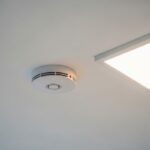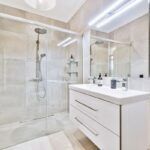Prefab homes, also known as prefabricated homes, have become a hot topic in the world of modern housing. As housing costs continue to rise, more people are exploring innovative ways to secure affordable, sustainable, and stylish homes. Prefab homes offer just that—an efficient and flexible housing solution. But what exactly are prefab homes, and why are they becoming so popular? In this comprehensive guide, we’ll explore the benefits, types, and key considerations when choosing a prefab home. Let’s dive into the world of prefabricated housing and see why it’s being hailed as the future of residential living.
What Are Prefab Homes?
Prefab homes are constructed off-site in a controlled factory environment and then transported to the final location for assembly. This process allows for more precise construction, reduced waste, and faster completion times compared to traditional homes built from the ground up. These homes come in a variety of styles, sizes, and materials, offering flexibility for those seeking a modern or eco-friendly design. Prefab homes can be built in a fraction of the time it takes to build a traditional home, making them an attractive option for those who want a quicker, more efficient build.
Types of Prefab Homes
There are several types of prefab homes, each with its own unique advantages and design possibilities. Let’s break them down:
- Modular Homes
Modular homes are built in sections or modules in a factory and then assembled on-site. They are fully customizable and can be designed to meet specific local building codes. - Panelized Homes
Panelized homes involve constructing the walls and roof panels in a factory before shipping them to the site. While they require more on-site labor than modular homes, they offer more design flexibility. - Kit Homes
As the name suggests, kit homes come as a set of pre-cut parts that you or your contractor assemble on-site. They are one of the most affordable prefab options but require more hands-on labor. - Manufactured Homes
Manufactured homes, commonly known as mobile homes, are built entirely in a factory and transported in one or two sections. They are the most cost-effective prefab option but may come with zoning restrictions in some areas.
Why Choose Prefab Homes?
When deciding between traditional and prefab homes, several key benefits make prefab an appealing choice. Here’s why more homeowners are leaning towards prefabricated houses:
1. Cost-Effective
Prefab homes are often more affordable than traditionally built homes. Because the construction takes place in a factory, labor and material costs are reduced. The streamlined building process allows manufacturers to pass these savings on to the buyer. And who doesn’t want to save a few bucks while still getting their dream home?
2. Faster Build Time
Since prefab homes are built off-site, weather delays and other common issues associated with on-site construction are minimized. This results in faster build times, meaning you can move into your new home sooner. Some prefab homes can be ready for move-in within just a few months.
3. Eco-Friendly
Prefab homes are often more sustainable than traditional builds. Factories can better control waste and use energy-efficient materials. Additionally, many prefab home designs incorporate energy-saving features like solar panels, better insulation, and high-efficiency windows, reducing your carbon footprint.
4. Customizable
One common misconception about prefab homes is that they all look the same. That couldn’t be further from the truth! Modern prefab homes offer a wide range of customization options, from floor plans and finishes to energy-saving features. Whether you’re going for a sleek, modern look or a more traditional style, prefab homes have you covered.
5. High Quality
Since prefab homes are built in controlled environments, the quality of construction is often higher than that of traditional homes. There are fewer chances for human error or weather-related issues, ensuring that each piece is precision-built.
Factors to Consider Before Buying a Prefab Home
Before jumping into the prefab home market, there are a few important factors to consider. These can help ensure you make the best decision for your lifestyle and budget.
1. Location
Where you plan to place your prefab home matters. Some areas may have zoning laws that restrict where prefab or manufactured homes can be placed. Always check with local authorities to ensure your dream location can accommodate a prefab house.
2. Foundation and Site Preparation
While prefab homes may come pre-assembled, you still need to prepare your site for installation. This includes leveling the ground and laying a foundation, which can add to the overall cost.
3. Financing Options
Getting a loan for a prefab home can sometimes be tricky. Modular homes, for example, typically qualify for traditional mortgages, but manufactured homes might not. It’s important to explore all your financing options to find one that works for you.
4. Resale Value
Though prefab homes have gained popularity, some types may not hold their value as well as traditional homes. Manufactured homes, for instance, tend to depreciate faster than modular homes. However, well-maintained and customized modular homes often appreciate over time, similar to traditionally built homes.
5. Energy Efficiency
If sustainability is important to you, pay attention to the energy efficiency of the prefab home you choose. Many prefab manufacturers offer eco-friendly models that come with energy-saving features, helping you save money on utilities in the long run.
FAQs About Prefab Homes
- Are prefab homes cheaper than traditional homes?
Yes, prefab homes are generally more affordable due to reduced labor and material costs. However, costs can vary based on customization options and site preparation needs. - How long does it take to build a prefab home?
Prefab homes can be built much faster than traditional homes. Depending on the complexity of the design, some homes can be move-in ready within 3-6 months. - Do prefab homes hold their value?
It depends on the type of prefab home. Modular homes tend to appreciate similarly to traditional homes, while manufactured homes may depreciate more quickly. - Can I customize a prefab home?
Absolutely! Many prefab homes offer customization options that allow you to design a space that suits your needs and style. - Are prefab homes energy-efficient?
Yes, many prefab homes are designed with energy efficiency in mind. Features like better insulation, energy-efficient windows, and even solar panels are common.
Conclusion
Prefab homes are revolutionizing the way we think about housing. Offering affordability, speed, sustainability, and customization, they provide a modern solution to the housing crisis while catering to environmentally conscious buyers. Whether you’re looking to build your dream home on a budget or seeking a sustainable option that reduces your carbon footprint, prefab homes might just be the perfect choice for you. So, are you ready to embrace the future of housing?
Authoritative Links:
www.prefabhomes.com
www.sustainableliving.org
www.affordablehousingonline.com
www.greenbuildingadvisor.com







